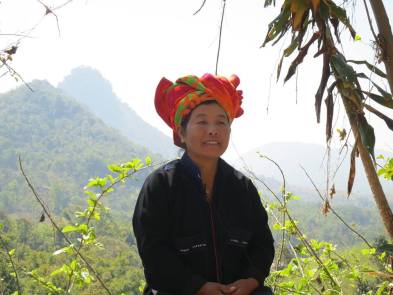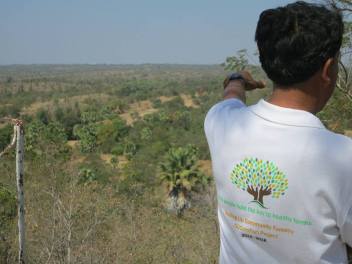Making Community Forestry in Myanmar a Roaring Success
When I was studying English I learnt numerous idioms – many of which still make no sense to me (e.g. it is raining cats and dogs). One that I understood and is constantly stuck in my mind is “never to leave a job half done”. This phrase has been rolling around my head for the last few weeks as I think of the recently completed SUComFor project here in Myanmar.
RECOFTC – The Center for People and Forests, working with the Forest Department and various civil society partners, has recently finished the Scaling-up Community Forestry in Myanmar (SUComFor) project. The three year project, which was funded by the Royal Norwegian Embassy in Myanmar, has been a notable success on many levels.
The project has facilitated the transferring of 19,000 hectares of forests to 94 villages across seven different landscapes in the country. This means that 5,229 households now hold a certificate that symbolizes their tenure over the forest. Additionally, another nine villages are soon to receive their certificates.
One key component of the project has been strengthening the laws to make them more supportive to those with tenure to their forests. One example is the Community Forestry Instruction (1995). An important focus area of the original 1995 version of the Instruction was on community forest members meeting their daily subsistence needs. There was very little consideration for livelihood development. The revised 2016 version of the Instruction, however, created a legal foundation to ensure that community forestry members can commercially benefit from their forests. This includes supporting the establishment of community forest based enterprises producing value added products.
 Another important area of the project has been increasing the confidence and strengthening the abilities of national and local government, civil society staff, and local community members to work together to address the challenges and opportunities they face for developing and benefiting from their community forests. In total over 5,000 people (most of them community members) have participated in trainings and other learning events under the project.
Another important area of the project has been increasing the confidence and strengthening the abilities of national and local government, civil society staff, and local community members to work together to address the challenges and opportunities they face for developing and benefiting from their community forests. In total over 5,000 people (most of them community members) have participated in trainings and other learning events under the project.
All the RECOFTC Myanmar country office and project staff have seen the incredible changes resulting from the project, yet I still have the feeling that the job is only half done. I suppose this is because of a comment made by one Secretary of a Community Forestry Management Committee. Talking about the new Community Forest User Group for which he is Secretary, he told me that he believes they “will raise living standards in the future now that [they] have management and production rights.” The future is rightly emphasized; we have much more to do.
We have built some excellent foundations for ensuring strong community forestry in Myanmar. Now we must ensure that the individual families, communities and the country as a whole can benefit, particularly by using these foundations to ensure that local communities can make a real and lasting living from their forest. This will be achieved by using the legal basis provided by the revised Instruction, the lessons learned from increased capacities, and the fact that more households have legal rights to use their forests. If we build upon these, then we have the potential to move from a job half done to a time when all stakeholders are declaring community forestry in Myanmar as a roaring success!


